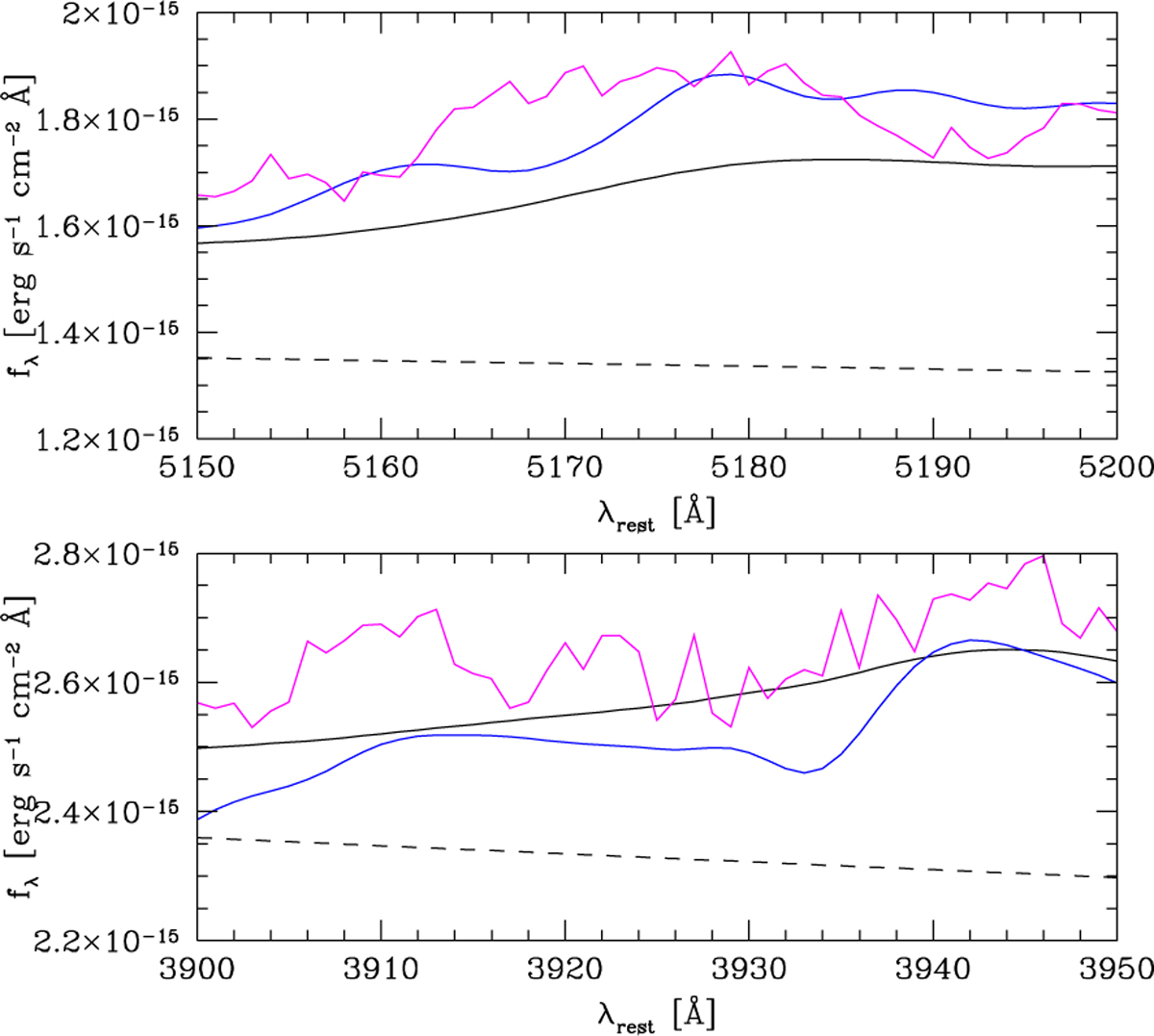Fig. 11

Mg I and Ca II K absorption bands of the spectrum of SDSS130112.91+590206.6 (magenta line), the model based on automatic STARLIGHT run (blue line), and the model without the automatic use of the STARLIGHT code (black line). Dashed line shows the power-law position for the second model; in the first model the power law is much lower. Absorption features widths of a few Å, corresponding to stellar dispersion and instrumental broadening, are expected at 3934 Å (CaII K) and 5167, 5173, 5184 Å (Mg I triplet). They are not seen directly in the data, since in strong Fe II emitters absorption features are masked by strong Fe II contamination. Therefore, the starlight appears not to form the basis of better representation of stellar absorption, as was possible for REJ 1043+396 (Czerny et al. 2016).
Current usage metrics show cumulative count of Article Views (full-text article views including HTML views, PDF and ePub downloads, according to the available data) and Abstracts Views on Vision4Press platform.
Data correspond to usage on the plateform after 2015. The current usage metrics is available 48-96 hours after online publication and is updated daily on week days.
Initial download of the metrics may take a while.


